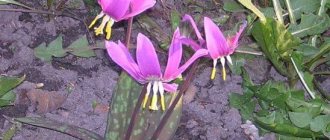Biological features
Peanuts are mistakenly called nuts, although in fact this annual plant is a distant relative of the pea. The legume reaches a height of 50-60 cm and has a deep 1.5 meter root. The upper part of the root system can be 1 m in diameter, which explains the resistance of groundnuts to drought.
The plant has dark green pinnate leaves. Yellow (yellowish-orange) flowers are collected in inflorescences in axillary racemes. Flowering lasts from the onset of summer until frost itself. Each plant produces over 1000 flowers and 30-60 fruits.
Read also: How to quickly peel peanuts
Some time after flowering, a gynophore (an elongated receptacle) is formed in place of each flower, which on the 6-7th day bends sharply and “goes” into the ground, introducing the ovary to a depth of 8-10 cm. Its upper part, after entering the soil, quickly grows, forming a cocoon-shaped bean with a fragile thatch shell. Each such pod develops from 1 to 6 (usually 1-3) oval seeds with pink or dark red skin.
How to grow peanuts in your garden at home
This culture is interesting to cultivate. Many owners of country plots choose it for cultivation. The peanut itself is a herbaceous annual plant. Its fruits look like beans, covered with a fairly dense shell. Their maturation occurs deep in the earth. This is where the second name “groundnut” came from.
Countries where the climate is hot and tropical are best suited for cultivating the plant on an industrial scale. But indoor conditions are also quite suitable for this. Even beginners will not encounter serious difficulties if they do everything correctly. You just need to plant groundnuts in the garden correctly.
Growing conditions
Simple growing rules will help you plant groundnuts (peanuts) and get a good harvest:
- The color of the soil is very important for peanuts. A plant planted in light soil takes root better. The oil obtained from such beans is also light in color and is more valuable than dark oil.
- Fruits develop in the ground, so the soil must be loose. The most suitable composition is chernozem, neutral or sandy loam.
- Peanuts grow better in beds where previously there were cucumbers, tomatoes, cabbage and potatoes. It is not recommended to plant beans after related crops (beans, peas, lentils).
- The most comfortable temperature is 20-27⁰С. If the value drops below 15⁰ or rises above 30⁰, plant growth will stop.
- Peanuts require constant moisture during flowering and fruit development. However, water should not be allowed to stagnate as it can slow down the seed ripening process.
- The beds where peanuts sit must be ventilated.
- The plant loves sunny places, so peanuts should be planted in open areas without shade.
If you neglect at least one condition, the plant will begin to hurt. Spots will appear on its foliage - direct evidence of the development of root rot.
How to properly care for and comply with agricultural standards?
For the successful development of the plant and a good harvest, it is necessary to comply with the standards of agricultural technology used for cultivating the exotic nut. Lack of lighting, non-compliance with temperature conditions and excess moisture will negatively affect the growth and development of the plant, so before planting, pay attention to all of the following aspects.
Lighting
To ensure that the plant receives enough light, place the pot on the windowsill of a window facing south or east. If this is not possible, then purchase an incandescent lamp that will provide the required amount of light.
Temperature
Peanuts cannot be called a whimsical nut, but still temperature is a key factor influencing the development of the fetus. The optimal temperature is +20-27 degrees. Indicators above +30 and below +15 can lead to the death of the plant.
Planting is done in soil that has reached a temperature of over 16 degrees. If the plant froze, but managed to be saved, then the harvest will taste like hell.
Watering
Peanuts need regular watering, as the soil should always be moist. However, make sure that the soil does not turn into lumps. Otherwise, excess moisture will cause root rot and, as a consequence, the death of the entire plant.
- Moisten the soil 1-2 times every two weeks.
- During the flowering stage, water the plant generously 1-2 times a week.
- After the ovaries form, spray the plant every other day in the evening.
Advice! In summer it is recommended to spray the plant with a spray bottle. Take water at room temperature and treat the seedling in the morning and evening. After each spraying, the soil must be loosened so that it is saturated with oxygen.
Top dressing
It is recommended to feed peanuts twice a season. The procedure has a good effect on the growth and development of the crop. It is better to select fertilizers based on potassium and phosphorus and use the correct dosage based on the height of the seedling:
- The first feeding is applied when the plant has reached 10 cm in height. For 1 liter of water use:
- 2 g ammonium nitrate;
- 4.5 g potassium salt;
- 7g superphosphate.
- The second time fertilizers are applied is at the fruiting stage, when the plant needs sufficient nutrients for the development of legumes.
Read about how to grow a good harvest here.
Planting peanuts
Then the prepared sprouts are planted in the soil or grown as seedlings. Each method has its own characteristics.
In open ground
In the southern regions of the country, sowing of sprouted seeds can be done in mid-May, when the temperature regime is set at +20⁰... +25⁰С, and the ground at a depth of 0.1 m warms up to 15⁰С. If the indicators are lower, the grains will simply rot.
The plant is planted in holes to a depth of 8 cm. The following planting methods exist:
- chess - distance between holes 50 cm, row spacing - 25 cm;
- square-cluster - according to the 60x60 or 70x70 cm pattern, up to 5-6 sprouts are placed in the hole;
- wide-row - width between plants is 15-20 cm, between rows - 60 cm.
Only large grains should be planted, since small or damaged ones may not germinate. After sowing, the holes need to be filled with soil and lightly compacted. Walnut shells are high in minerals, so many gardeners crush them and add them when planting.
Important!
Planted peanuts should be protected from birds; they can destroy not only young shoots, but also sprouts.
To protect the seed from the mole cricket, you need to make a few simple baits: cover the plantings with roofing material and sprinkle manure or plant debris on top. Traps should be periodically inspected and pests removed.
Growing seedlings
To grow peanut seedlings, you need to follow a number of simple steps:
- In early April, fill plastic glasses with light soil.
- Plant the seeds in the ground to a depth of 30 mm.
- Place the glasses on a well-lit windowsill.
- Maintain moderate humidity.
- Prepare the bed for planting - dig up, remove weed rhizomes, apply fertilizer.
- At the beginning of summer, transplant the plants into open ground using one of the schemes given above in the article (as is the case with seed sowing).
Soil selection and fertilization
Soil selection
Considering that fruits form in the ground, you need to carefully choose the soil. Loose black soil is perfect for this; you can also plant seeds in sandy loam or neutral soil.
Growing a peanut plant requires potassium, magnesium and large amounts of humus.
Fertilizers for feeding the soil
Growing peanuts requires fertilizing the soil several times per season. Fertilizing with mineral fertilizers is done per one hundred square meters:
- Nitrogen is added in an amount of 0.45 - 0.6 kilograms;
- Phosphorus - the amount varies in the range of 0.5 - 0.6 kilograms;
- Potassium is applied exclusively to sandy loam soil in an amount not exceeding 0.45 kilograms.
Feeding periods
Fertilizing the soil is carried out three times during the period of growing peanuts in the garden:
- The period of formation of true leaves.
- The period of bud setting.
- The period of fruit formation.
Aftercare
It is not enough to know how peanuts grow at home; you also need to know how to properly care for them. In May, the soil in the garden is sufficiently moistened with melted snow, so the plant can be watered only after mass germination (twice a month with water heated in the sun). It is better to use a drip irrigation system or furrow irrigation.
Another important condition for good yield is regular hilling of plants. This procedure should be carried out several times per season. How much harvest the bushes will bring depends on the frequency and correctness of execution:
- The first hilling with loose, moist soil is carried out before flowering to a height of 5-7 cm.
- The second is carried out after 10 days from the start of flowering.
- In the future, you need to add soil around the bushes every 1.5 weeks.
- The last hilling is carried out in early August.
Plants are fertilized three times per season:
- when the bush reaches a height of 10 cm;
- during the period of bud formation;
- at the beginning of fruit formation.
For this purpose, use the following solution: 20 g. ammonium nitrate, 45 gr. potassium salt (for sandy loam soil), 70 gr. superphosphate dissolved in a 10 liter bucket of water.
Types and varieties of peanuts
There are several varieties of peanuts. They have different heights, yields, kernel sizes, ripening periods, and spreading rates. Peanuts, which are grown in vegetable gardens and orchards as a cultivated plant, can be divided into the following groups:
- Valencia - distinguished by large fruits and bright colors. It has no small grains. The group includes only one variety, which bears the same name. There is also a species that was bred from it called "Valencia C".
- Virginia – valued for its excellent taste. Therefore, it is often used to prepare various desserts, in chocolate and ice cream. This group includes varieties such as Perry, Gull, Gregory and others.
- Runner - known for its high yield and amazing taste of the fruit. Among its varieties are Tamran, Egyptian giant, Georgia green and some others.
- Spanish - although it does not have many fruits during harvest, and they are also quite small, the kernels are still very much appreciated due to their oiliness. This group is represented by varieties such as Star, Comet, Argentine and several more.
Domestic selection includes some more varieties - Acorn, Bayan, Stepnyak, Krasnodarets 14, Klinsky and others.
Harvesting
The fruits should ripen in early October. The bushes must be dug up, shaken off the ground, turned over and placed on the ground with the rhizome facing up to dry the beans. Then the plants need to be brought indoors or under a canopy for 4-6 days.
After the stems have dried naturally, you can begin processing the fruits. Beans should be dried at room temperature in boxes or fabric bags. The location of the fruit must be dry and ventilated.
Reference!
To speed up the process, it is allowed to dry the beans in the oven, but the temperature in the oven should not exceed 40⁰C.
After drying, peanuts intended for consumption are peeled and stored in the refrigerator. After two days, the groundnuts will be ready for fresh consumption. If desired, it can be fried.
When collecting and preparing seeds for planting in the new season, you need to peel the beans from the shell and dry them naturally. Then put the nuts in canvas bags and store at room temperature (in the kitchen or pantry).
Other growing methods
There are alternative, albeit less commonly practiced, growing methods. However, they also deserve attention.
On warm beds
Preparation should begin in the fall or early spring in accordance with the following algorithm:
- Choose a place and dig a 15-20 cm trench. It is advisable to make beds 1 meter wide.
- Lay the top layer of soil on one side, the bottom layer on the other.
- Cover the bottom of the hole with a layer of plant remains (at least 10 cm), sprinkling them with a small amount of soil. Place semi-rotted compost on top.
- Cover the beds with topsoil.
Warm beds warm up earlier and give off heat longer due to the overheating of organic matter.
At home
After receiving the seedlings, you can leave 2-3 sprouts for growing on the windowsill. To get a harvest at home you need:
- Fill a wide container with soil mixed with sand and humus.
- Plant the sprouts in the soil and place the container on a well-lit windowsill. It is very important to avoid drafts.
- Wait for the flower to appear and the pod to form. It is necessary to ensure that the shoots do not extend beyond the container, otherwise the ovary will not be able to develop further.
- Periodically moisten and loosen the soil.
- When the plant stops growing and the leaves turn yellow, collect the fruits.
This method is suitable for those whose local climate does not allow planting peanuts in the country.
In greenhouse conditions
Peanuts feel great in greenhouses, especially next to tomatoes. The latter should not grow too densely so as not to shade the legume crop. In the case of such planting, groundnuts enrich the soil with nitrogen, and tomatoes protect it from the sun during particularly hot hours.
Planting and care are the same as in the case of open ground. The greenhouse needs to be regularly ventilated, the soil loosened, the plants hilled and watered. Harvesting can begin as early as September.
In central Russia
Growing peanuts
In industrial conditions, peanuts have long been grown in central Russia. Therefore, it is quite possible to harvest at your own dacha. To do this you need:
♦ Properly prepare the site - carefully loosen the soil, remove weed rhizomes and apply phosphorus-potassium fertilizers. Since peanuts are legumes, they do not tolerate organic fertilizers (poultry litter, mullein or manure).
♦ Planting: before adding seeds and beans to the soil, they are wrapped in a damp cloth for a day. You only need to plant in warm soil. seedlings can be grown at home on a windowsill or in a greenhouse
♦ Care: after planting, the soil is regularly loosened and watered to activate the formation of nuts underground.
As the fruits ripen, the tops begin to dry. This is an absolutely normal process. However, strong temperature fluctuations can slow down or stop fruit development. If the readings fall below 18 or rise above 28 degrees, the nuts stop growing until the temperature returns to normal. Watering should also be done moderately. Excessive moisture can cause fungal diseases, and lack of water provokes the death of bushes.
Before harvesting, stop watering so that the soil dries out a little and it is easier to remove the bushes from the ground. On average, up to 50 pods are formed on one bush. They are taken out and dried in a dry, shaded room.











